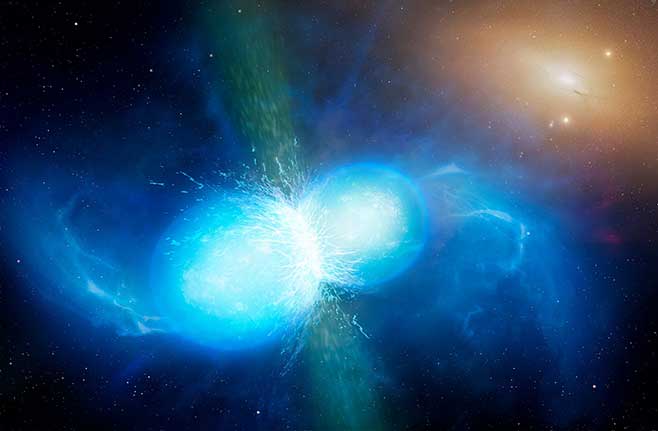NASA Selects Space Flight Laboratory (SFL) for StarBurst SmallSat Mission

TORONTO, Ontario, Canada, 28 June 2021 – NASA Marshall Space Flight Center has contracted Space Flight Laboratory (SFL) to develop a small satellite platform for the StarBurst astrophysics mission. Part of the newly formed NASA Pioneers Program, StarBurst seeks to detect high-energy gamma rays that are emitted from events such as the mergers of neutron stars.
“SFL is pleased that NASA has chosen us to participate in the Pioneers Program that was created specifically to perform astrophysics science with smaller, more cost-effective hardware, including small spacecraft developed the microspace way,” said SFL Director Dr. Robert E. Zee.
NASA announced the Pioneers Program in 2020 to develop small-scale astrophysics missions using small satellites, balloons, and modest International Space Station payloads to explore cosmic phenomena. In the first round, NASA selected four proposals to study galaxy evolution, exoplanets, high-energy neutrinos, and neutron star merger.
Managed by the NASA Marshall Space Flight Center, StarBurst will focus on neutron star research, using a 250 kg smallsat built by SFL to observe the gamma rays emitted from these merger events, which form most of the heavy metals, such as gold and platinum, in the universe. It is believed StarBurst could observe up to 10 neutron star mergers every year.
SFL will develop the StarBurst mission on its space-proven 1x1x1-meter scalable DAUNTLESS bus. Under Phase A of the program, SFL will complete the platform concept design, and upon approval by NASA, will then proceed with detailed design, integration, and testing of the spacecraft. SFL will also support the launch, commissioning, and operation of StarBurst, notionally scheduled for 2025.
SFL is a unique microspace provider that offers a complete suite of nano-, micro- and small satellites – including high-performance, low-cost CubeSats – that satisfy the needs of a broad range of mission types from 3 to 500 kilograms. Dating from 1998, SFL’s heritage of on-orbit successes includes 69 satellites and distinct missions related to Earth observation, atmospheric monitoring, ship tracking, communication, radio frequency (RF) geolocation, technology demonstration, space astronomy, solar physics, space plasma, and other scientific research.
In its 23-year history, SFL has developed CubeSats, nanosatellites, and microsatellites that have achieved more than 150 cumulative years of operation in orbit. These microspace missions have included SFL’s trusted attitude control and, in some cases, formation-flying capabilities. Other core SFL-developed components include modular (scalable) power systems, onboard radios, flight computers, and control software.
About Space Flight Laboratory (SFL)
SFL generates bigger returns from smaller, lower cost satellites. Small satellites built by SFL consistently push the performance envelope and disrupt the traditional cost paradigm. Satellites are built with advanced power systems, stringent attitude control and high-volume data capacity that are striking relative to the budget. SFL arranges launches globally and maintains a mission control center accessing ground stations worldwide. The pioneering and barrier-breaking work of SFL is a key enabler to tomorrow’s cost aggressive satellite constellations.
Download the specification sheet for all SFL platforms here.
SFL Contact:
Dr. Robert E. Zee
SFL Director
1-416-667-7400
info@utias-sfl.net
Follow SFL on Twitter @SFL_SmallerSats
